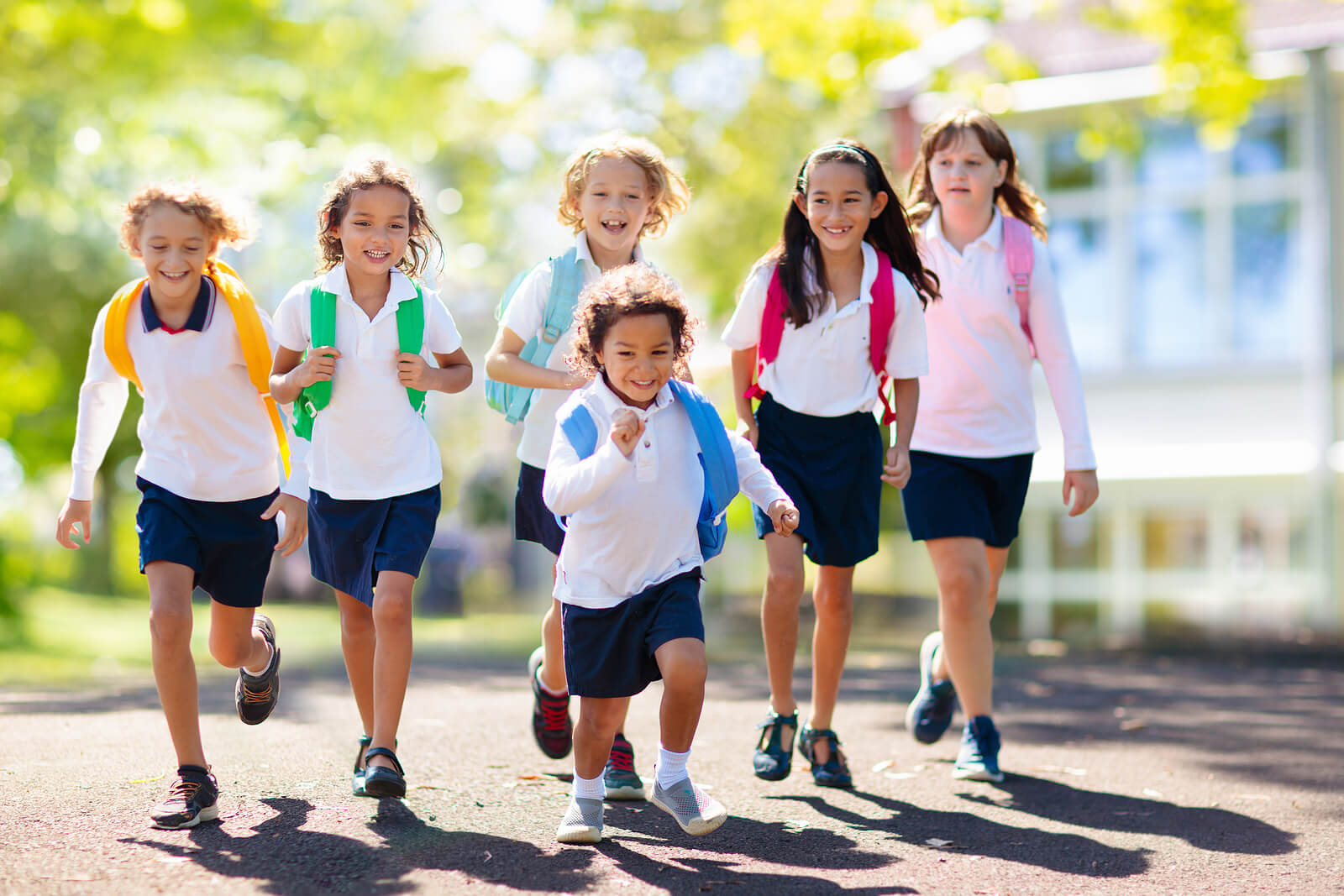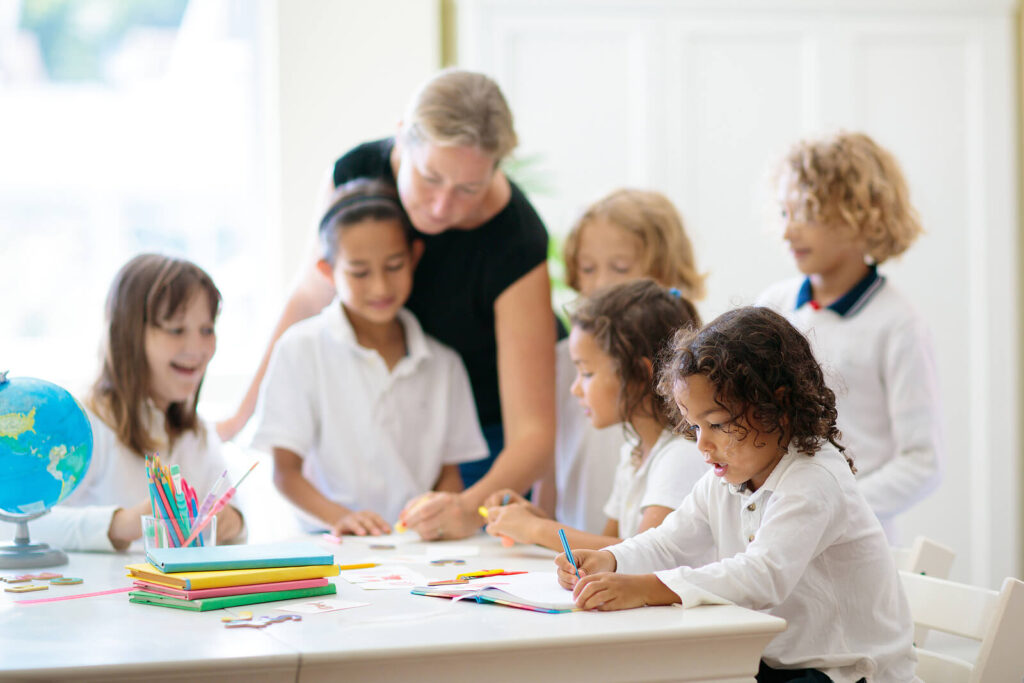
Empowering Success: Nurturing Bilingual Learners in Schools
by Thảo-Châu Trịnh, Psy.D. and Jaclyn Wolf, Ph.D.
Our public schools mirror our society. With more than 350 languages spoken in the United States, our multilingualism as a nation reflects in our public school classrooms too. We call students who speak more than one language bilingual (or multilingual) learners. Nurturing these diverse learners presents some challenges for our schools. But their presence also provides also some very unique opportunities for all students, and society as a whole.
Bilingualism/Multilingualism is a superpower!
Research shows that people who know more than one language often show improved memory, organizational skills, and mental health! Also, unique experiences, cultural perspectives, and language skills can make the classroom a more fun and interesting place to learn. But catching up in school can be hard when you are not familiar with the dominant language — especially if no one speaks that language at home. Bilingual learners need support so they can understand more subjects, talk to more friends, and connect with their families better. When we support bilingual kids, we show them that both their languages and cultures are valuable and important. It’s like giving them a special key to open more doors in life. And by helping them, schools are making sure everyone gets a fair chance to shine and succeed.
Creating an Inclusive Environment:
Imagine if everyone in a school was exactly the same – that would be boring, right? When we include all these differences, school becomes a more fun and interesting place to learn. Inclusivity means making sure everyone feels welcome and a part of the group. Ensuring everyone feels valued and respected, helps us make friends, learn about the world, and become more empathetic people. So, by having lots of different people and treating them all with kindness, schools become great places to grow together! So how do teachers and psychologists help make school a more inclusive and welcoming place for bilingual learners?
Cultural Awareness:
Schools need to support teachers and staff to understand and respect different customs, beliefs, and ways of life. By understanding a student’s background and experience, adults can make school a more welcoming and respectful place for them.
Multilingual Resources:
Helping bilingual learners adjust better in school and learn more requires a variety of resources. Offering books, videos, and other things in different languages, helps socially and with learning in the classroom. Using bilingual books (books in both English and a student’s home language) and translating materials increases access to text. Hiring multilingual teachers and counselors at school foster increased communication too. Using different types of visual aids (like videos, drawings, diagrams, and pictures) and technology (like the internet, computers, and tablets) also helps! And having pictures or words that match with what they hear helps all students understand information better – not just bilingual learners.
Language Support:
Each student needs different levels of support depending on how much English the bilingual learner already knows. Some students need one-on-one support by getting pulled out of class. Others learn better working with classmates who are at the same language level. These settings allow students to keep growing skills in their home language (like reading and writing) while learning English.
Scaffolding:
Think of the structure and support offered in the classroom as scaffolding (like on a building under construction). First, these supports make school easier for the student just starting to learn and socialize in English. This empowers the student to engage with learning and helps them feel confident in persevering when things are challenging. As each day goes by and the student acquires new skills, both the work and the supports are shifted, making it easier to climb up higher and learn the next set of skills.
Building Community
When we know our neighbors and classmates, we can help each other, have fun, talk to one another, and solve problems together. It’s like having a big group that cares about each other and makes our surroundings feel safe and happy. Building community also helps us learn about different people and cultures, which makes our world bigger and more interesting. So, when we build a strong community, we all feel like we belong. We all have a place where we’re valued and supported.
Imagine being in a new place with people you’ve never met, and who don’t speak the same language as you. That can be really scary! When someone is new at your school, we can help them feel welcome and less scared by showing them around. Teach them the rules, and explain to them how things are done. Make sure there are other kids and grownups that can support them. Here are ways to do that:
Peer Mentoring:
Peer mentoring is really helpful because it lets friends help each other. When someone who knows a lot about something guides you, it’s like having a buddy who is also a teacher! You can ask questions without feeling shy, and they explain things in a way that makes sense. This kind of help feels comfortable and makes learning a new language much easier.
Counseling:
Adjusting to a new culture and language can be overwhelming. Counseling and therapy can teach good ways to handle big feelings and solve problems. Counseling and therapy for bilingual learners should occur with helpers who know how to listen and understand in both languages. This makes it easier for them to talk about worries. With this type of support, bilingual learners can grow strong and confident in both their hearts and their languages.
Supporting Families:
When there is a bilingual learner at school or in the classroom, it’s not just the student but their whole family that may need extra support. It could be a family that just moved to your neighborhood, or they may have lived there a long time. Sometimes other family members (like parents, grandparents, cousins, aunties, and uncles) need help getting connected to information, places in the community, and even translation services so that things will be easier to understand and navigate. By helping to support families, the bilingual learner can also thrive. Parent Guide link here
Celebrating Culture:
Having opportunities to celebrate different cultures can be a wonderful way to learn new things and help others feel welcome. When a bilingual learner shares about their culture and heritage–through dance, storytelling, music, art, costumes, and food–it can empower them and help them feel proud of who they are and where they came from!
Onward to Success!
In conclusion, supporting bilingual learners in schools is not just about helping them learn languages. It’s about empowering them to succeed in all aspects of life. By recognizing and valuing their unique abilities, schools create an inclusive and enriching environment for everyone. When bilingual learners get the right support, they can do really well in school. Also, they can stay connected to their cultural roots. When someone knows more than one language, they hold a special key that can open many more doors in life! Supporting language development and embracing diversity and cultures helps make schools and communities a more inclusive and connected place.




One thought on “Empowering Success: Nurturing Bilingual Learners in Schools”